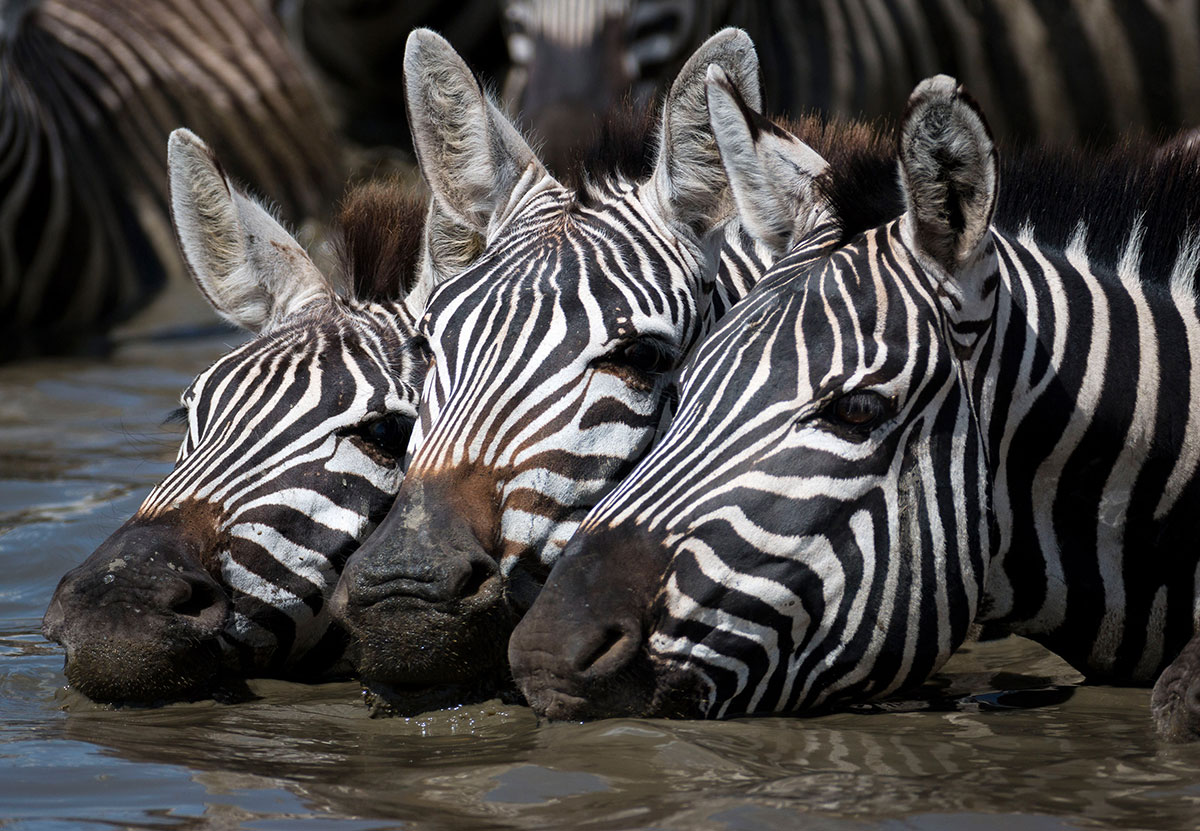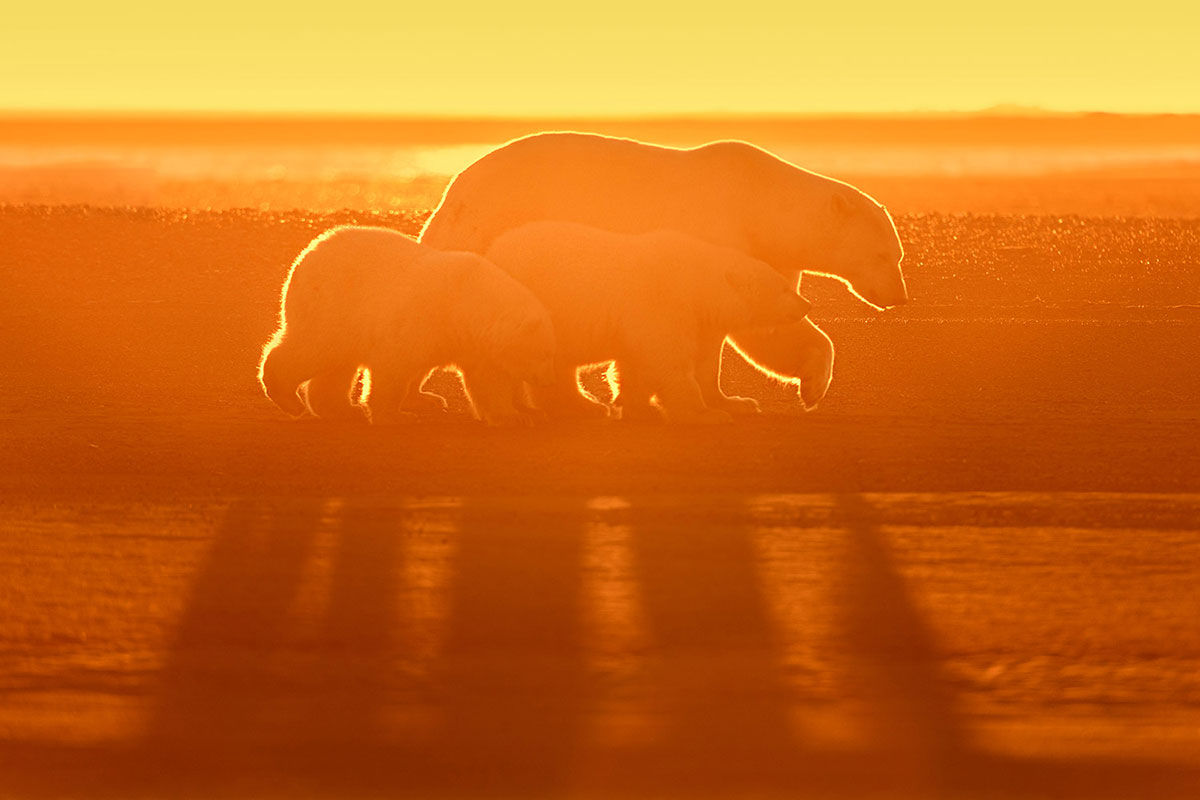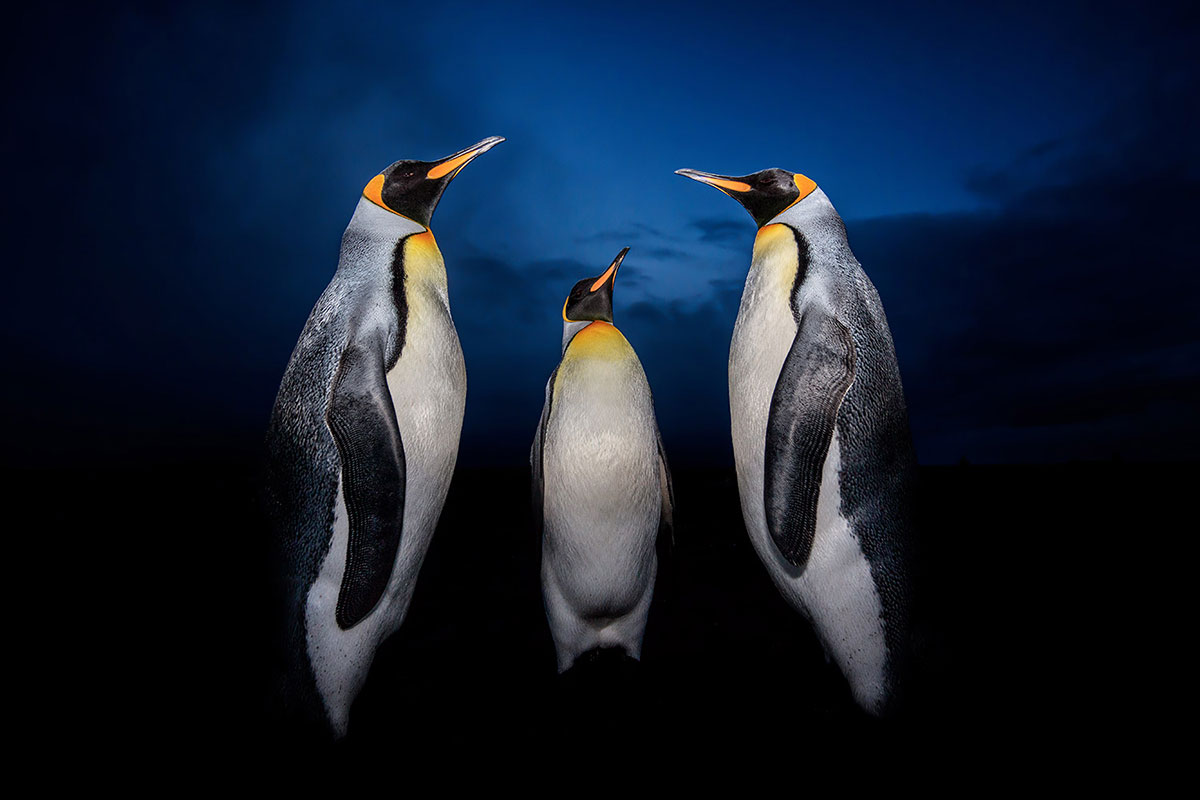I’m not a big fan of the so-called “Rule of Odds,” which claims that photographic compositions are more visually appealing when there is an odd number of subjects. Of course, depending on your subject matter and overall composition, sometimes an even number of subjects doesn’t work—but then again, sometimes an odd number doesn’t work, either.
Frankly, there’s nothing more amusing than watching someone count the number of subjects in a potential shot, and then reject the composition because the number is six instead of seven (I’ve actually seen this happen). In my opinion, a good photographer can make successful compositions whether dealing with one, two, three, four, or ten thousand subjects.
That said, I must admit that I do have a certain affection for the number three. Although I look for good visual designs no matter the numbers, when I can successfully incorporate three into my composition, I usually jump at the chance. As it turns out (as with so many things), Schoolhouse Rock was right: sometimes, “Three is a Magic Number.”
Related article: Photo Composition Tip: It Takes Two
Related article: Photo Composition Tip: One (Is the Loneliest Number)
Related article: Backlighting Photography Tips for Photo Magic
What’s so special about the number three? Three subjects lend themselves to more complex visual interactions than when you are working with just two or one. Here are three ways you can use three subjects to create powerful compositions. Sorry, I just couldn’t resist!
Three subjects can form a triangle.
Triangles are, quite simply, shapes formed by three connected sides. Many elements within the natural world approximate the triangle shape, including mountains and conifer trees. Implied triangles can also arise from the interaction of three objects, such as the three Cape fur seals in the photo below. In terms of composition, triangles can create balance and stability, bringing order to the visual design of your photograph. As discussed in more detail below, triangles can also point the viewer’s eye to important parts of the image, leading the viewer deeper into the scene.
Related article: Creative Use of Bokeh in Photography
Three subjects can form a vanishing point.
The point in the distance at which objects become too small to see is called a vanishing point. Think of railroad tracks; even though they are parallel, when you look down a set of tracks, they seem to steadily converge to (and vanish at) a point at the horizon. Since the Renaissance, artists have been using vanishing points as perspective cues to create the illusion of depth in two-dimensional art. But even more important than that, the convergence of two lines at a single point compellingly leads the viewer’s eye deep into a composition.
Part of what makes the triangle shape so powerful is that every triangle naturally creates a vanishing point. For example, if you draw lines from the penguin heads on the left and the right to the penguin head in the middle, you get a vanishing point that helps draw the viewer deeper into the composition. Technically, every triangle creates three vanishing points, but depending on the relative spacing and arrangement of your subjects, one of the vanishing points will usually be the most obvious to the viewer, such as the vanishing point leading the eye to the middle penguin below.
Related article: How to Use Leading Lines to Create Compelling Landscape Photos
Three subjects can form a pattern.
One object by itself is just lonely, while two similar objects side by side is just a coincidence. But three similar objects in a row starts to look suspiciously like a pattern. Why does this matter? Well, as it turns out, the human eye is naturally attracted to repeating shapes and colors, which is why we find patterns particularly appealing. If you think about it, humans put patterns everywhere, from our city streets, to the clothes we wear, to the music we listen to. The great thing about the number three is that it is the minimum number you need to form a pattern. Of course, a pattern will emerge only if your three subjects are sufficiently similar. Having one subject break the pattern slightly (for example, by standing or holding its head a different way, or by being closer to one subject than the other) can enhance visual interest.

Conclusion
Three can be a powerful number for photography, so be on the lookout for scenes involving three subjects. When three subjects come together and interact, interesting compositions can be the result.
Want to learn more?
If you are interested in taking your photos to the next level, then check out Visual Flow, my critically acclaimed eBook/video bundle on photographic composition. This is a great resource, but don’t just take it from me – here’s what others have said about it:
“Ian Plant has done the best job I have seen in explaining the secrets of good composition.” —Landscape Photography Magazine
“Visual Flow is one of the most comprehensive e-books I’ve ever read on the topic of composition. In fact, I would say this book might completely revitalize your photography.” —PhotoWhoa
“Ian Plant’s eBook Visual Flow: Mastering the Art of Composition belongs on the digital bookshelf of every serious photographer.” —PhotographyTricks.com
About the author: Managing Editor of Outdoor Photography Guide, world-renowned professional photographer, and Tamron Image Master Ian Plant is a frequent contributor to leading photo magazines including Outdoor Photographer, Popular Photography, and Landscape Photography Magazine. You can see more of his work and download his free photography how-to eBook “Essential” at www.ianplant.com.
Have something to add to the story? Leave a comment or email editor@outdoorphotographyguide.com.






Are cell phones photos accepted?
As a <a href="https://www.stpaulboudoirphotography.com/">photographer</a>, I really enjoyed your article for composition. The way you connect these numbers to the Rule of Thirds and Golden Ratio is a great way to create balance in an image. The examples were particularly helpful in illustrating how to avoid clutter and maintain harmony in a shot. I’m curious—how do you apply these principles quickly in fast-moving outdoor conditions without losing the spontaneity of the moment?
Why are people repeatedly bringing up the Rule of Thirds in regard to this article? This article was about a DIFFERENT RULE, the Rule of Odds. Great piece, Ian.
Did I not understand? I did not get out of the article anything about the "Rule of Thirds", placing the subject in an intersection of a line in one third of the picture. What I got was the "Rule of Odds". In this article it was more about 3's in the picture. The author talked about 3, 5, 7, subjects in the picture with a small comment on composition. I am far from being a photographer but I do take a lot of pictures for my own enjoyment.
I've never heard the idea of the "Rule of Thirds" being an odd number of subjects. I've taught photography at the university level for 20+ years, presented workshops for numerous professional organizations and operated a studio for 35+ years. I've never heard that. The "Rule of Thirds" is that an image is visually more pleasing when the primary subject is placed in such a way that it falls roughly at the intersection of lines dividing the image frame in thirds horizontally and vertically.
INHO, the Rule of Odds is primarily directed at images including two subjects that compete for the viewer's attention or, actually, create two distinct images.
I had never heard that the Rule of Thirds was ever about 3 subjects (objects?) in a photo. It was always about dividing a picture frame into 9 sections, then using the crosses as more suitable approximate positional sites for subjects, whether only one or maybe 390. I also knew that the "rule" was easily, and appropriately, broken in several circumstances and that other "rules" might better fit a composition.
This was a great article. I have always like 3s as well!